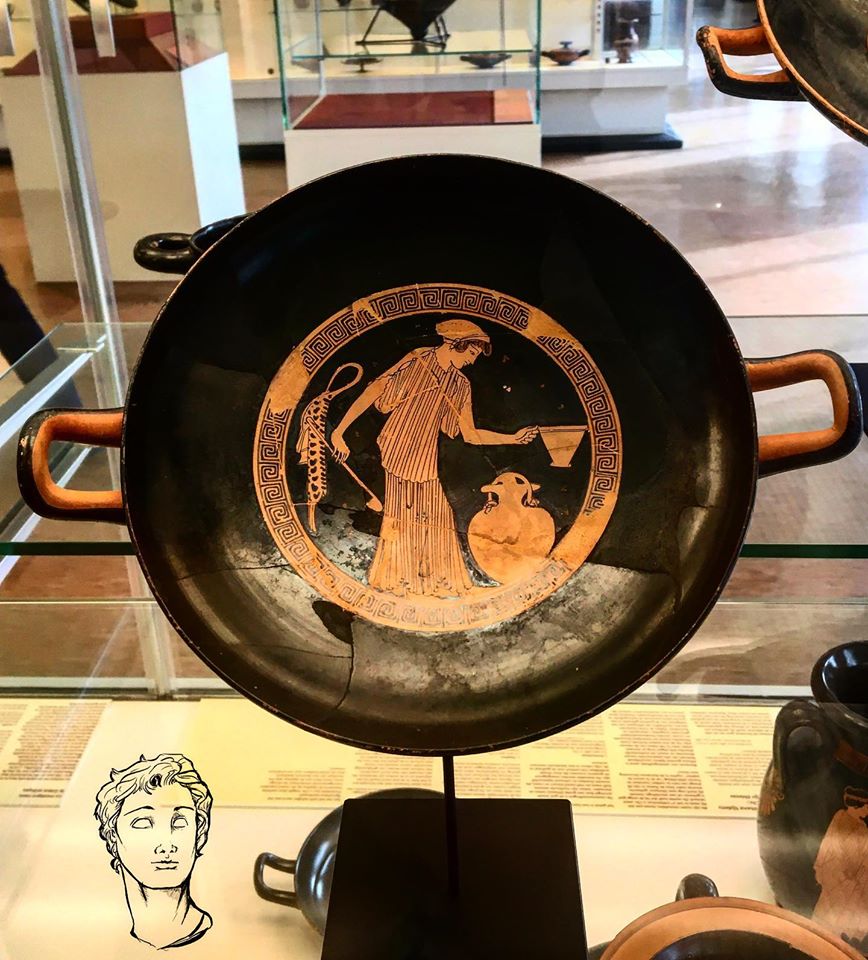Walk into any museum with a section devoted to ancient Greece and you will not go long without spotting a Greek vase. Due to the vast majority of Greek vases that survived from antiquity, they have taught us a lot about life in the ancient world. If you have examined one of these bowls or amphorae, you might have noticed the different styles used to decorate them. In this post, we delve a little deeper into the different decorative styles of ancient Greek pottery.
PROTO-GEOMETRIC POTTERY
The first distinct Greek pottery style was the so-called Proto-Geometric style which emerged in Greece around 1000 BC. The pottery produced at this stage had simple designs which heavily featured circles, semi-circles or simple black lines. Sometimes, whole parts of the vase would be painted completely black.
GEOMETRIC POttERY
From 900 BC, Geometric designs were painted on the central part of the vase, often wedged in between two completely black sections. Geometric pottery had bold linear patterns and lines and from 800 BC these designs also included stylize human figures, birds and animals. All of these patterns were painted on the vases in brown or black paint. In the 7th century, the Orientalising style appeared in Corinth due to the polis’ trade with the east. Typical for the Orientalising style are stylized plants, animals and curved lines. The stylized human figures painted in black became more and more pronounced, resulting in the black figure style.
Black figure Pottery

From the middle of the eight century, the black-figure technique became more and more common. Originating in Corinth, and later Athens, the black-figure technique was embodied by silhouetted dark figures enlivened with incisions and patches of colourful clay. These figures were created by implemented figures and floral motives with a slip that turned black during firing while the background remained red throughout the process. The figures were further detailed by incising the slip or by using white or purple paint to apply additional details. The painters depicted a variety of flora, fauna, myths, legends and daily life. The black figure pottery style remained dominant until 520 BC, when painters in Athens started experiencing with the red-figure technique.
Red figure Pottery
 The red-figure style, which originated in Athens in the second half of the sixth century. This new technique enabled painters to represent figures in three-quarter view and led to further experiments over the next century in foreshortening, perspective and shading. At the end of the sixth century, artists competed to represent the human form. Red-figure styles in the western Greek colonies, especially in South Italy, were adapted to suit local tastes but but also evidence a continuing enthusiasm for Greek drama and religion.
The red-figure style, which originated in Athens in the second half of the sixth century. This new technique enabled painters to represent figures in three-quarter view and led to further experiments over the next century in foreshortening, perspective and shading. At the end of the sixth century, artists competed to represent the human form. Red-figure styles in the western Greek colonies, especially in South Italy, were adapted to suit local tastes but but also evidence a continuing enthusiasm for Greek drama and religion.
White ground Pottery
 The final post in the series on Greek pottery is about white ground pottery. This technique was, once again, developed in Attica around 500 BC. A layer of white slip of kaolinite covered the vase in order to make it more appear more valuable. The style was also used in proto-geometric pottery in the Cyclades among others. The white-figure painting was less durable than red or black figure painting, making it especially suited for votive or funerary purposes and the technique became particularly connected to lekythoi – vessels used to store oil in.
The final post in the series on Greek pottery is about white ground pottery. This technique was, once again, developed in Attica around 500 BC. A layer of white slip of kaolinite covered the vase in order to make it more appear more valuable. The style was also used in proto-geometric pottery in the Cyclades among others. The white-figure painting was less durable than red or black figure painting, making it especially suited for votive or funerary purposes and the technique became particularly connected to lekythoi – vessels used to store oil in.
Did you enjoy this post? What is your favourite style of pottery? Be sure to check out the Greek pottery gallery or the posts on Instagram.




